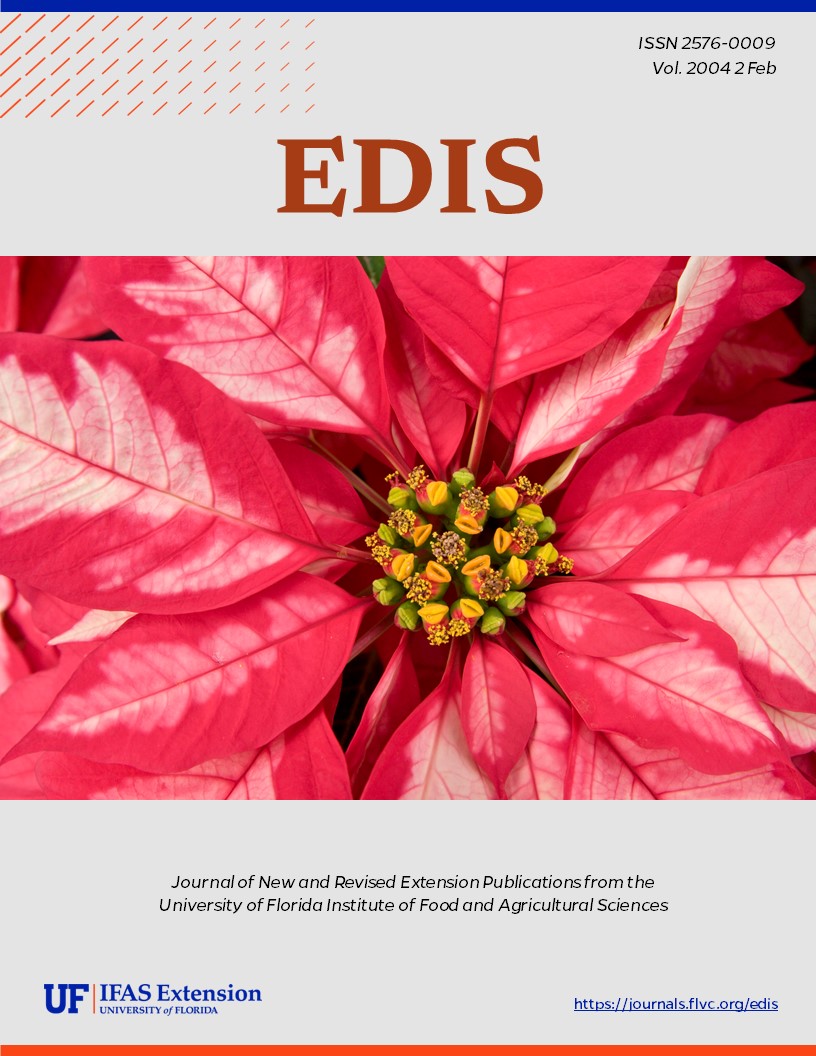Abstract
The atala is our largest and most spectacular eastern U.S. hairstreak. Due to decline in abundance of its host plant, coontie, because of over-harvest (as a source of starch) and habitat destruction due to development, the atala was believed to have become extinct. It was not collected in Florida from 1937 until 1959. The atala is now common locally in southeast Florida probably as a result of the popularity of its host plant as a landscape ornamental. In fact, it is now occasionally considered a pest in ornamental plant nurseries. This document is EENY-169, one of the Featured Creatures series of the Entomology and Nematology Department, Cooperative Extension Service, Institute of Food and Agricultural Sciences, University of Florida. Published: October 2000.
References
Baggett, H.D. 1982. Florida atala. In: Franz, R., ed., Rare and Endangered Biota of Florida. Vol. 6. Invertebrates. University Presses of Florida. Gainesville, Florida. Pp. 75-77.
Bowers, M.D. and Z. Larin. 1989. Acquired chemical defense in the lycaenid butterfly Eumaeus atala Journal of Chemical Ecology 15: 1133-1146. https://doi.org/10.1007/BF01014817
Bowers, M.D. and S. Farley. 1990. The behaviour of grey jays, Perisoreus canadensis, towards palatable and unpalatable Lepidoptera. Animal Behaviour 39: 699-705. https://doi.org/10.1016/S0003-3472(05)80381-1
Culbert, D.F., (October 1995). "Florida coonties and atala butterflies." UF/IFAS Featured Creatures. http://edis.ifas.ufl.edu/MG347. (November 6, 2000).
Gerberg, E.J. and R.H. Arnett. 1989. Florida Butterflies. National Science Publications, Inc. Baltimore, MD.
Hammer, R.L. 1996. New food plants for Eumaeus atala in Florida. News of the Lepidopterists' Society 38: 1.
Landolt, P.J. 1984. The Florida atala butterfly, Eumaeus atala florida Rueber (Lepidoptera: Lycaenidae), in Dade County, Florida. Florida Entomologist 67: 570-571. https://doi.org/10.2307/3494467
Minno, M.C. and T.C. Emmel. 1993. Butterflies of the Florida Keys. Scientific Publishers. Gainesville, Florida.
Negrón-Ortiz, V. and D.L. Gorchov. 1996. Effect of fire season on Zamia pumila L. in pinelands of Everglades National Park, FL: preliminary findings. American Journal of Botany 83(6): 85. Abstract #245.
Opler, P.A. and G.O. Krizek. 1984. Butterflies East of the Great Plains. The Johns Hopkins University Press. Baltimore, MD.
Opler, P.A. and V. Malikul. 1998. Eastern Butterflies. Peterson Field Guide Series. Houghton Mifflin Company. New York.
Rawson, G. 1961. The recent rediscovery of Eumaeus atala (Lycaenidae) in Florida. Journal of the Lepidopterists' Society 15: 237-244.
Rothschild, M. 1992. Egg protection by the atala hairstreak butterfly (Eumaeus atala florida). Phytochemistry 31: 1959-1960. https://doi.org/10.1016/0031-9422(92)80341-B
Rothschild, M. 1986. Cycasin in the endangered butterfly Eumaeus atala florida. Phytochemistry 25: 1853-1854. https://doi.org/10.1016/S0031-9422(00)81161-9
Scott, J.A. 1986. The Butterflies of North America. Stanford University Press. Stanford, CA.
Unless otherwise specified, articles published in the EDIS journal after January 1, 2024 are licensed under a Creative Commons Attribution-NonCommercial-NoDerivs 4.0 International (CC BY-NC-ND 4.0) license.

